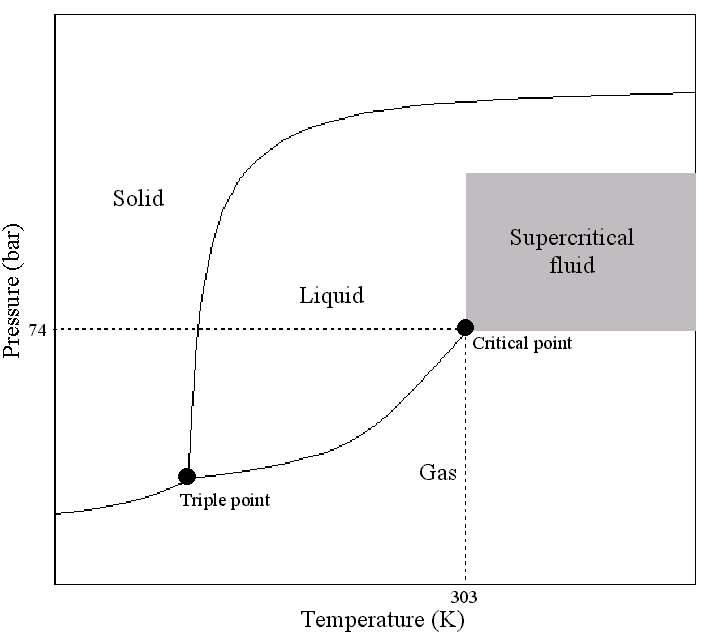
August 2, 2007
For the first time in history, the United States House of Representatives passed an energy package(a bill) that included a national renewable electricity standard. This requires that electric utilities obtain at least 15 percent of their power from a combination of energy efficiency and renewable sources—such as the wind and sun. If passed into law, this standard would not only be a significant step forward in combating global warming, but would also create jobs and save consumers money on their electric bills. (From Union of Concerned Scientists) The less rosy news is that in the U.S. a bill has to go through committees, and then through Congress to become a law. In addition, a law can always be vetoed by the President unless two thirds of congress override his veto.August 2, 2007
The Environmental Good News Page
As people move into the suburbs, they often become multi-car families in the absence of a public transit system. But when communities invest in an efficient commuter network, families save money and less NO2 and CO2 contaminate the atmosphere. People are beginning to recognize this truth. The American Public Transportation Association (APTA) announced recently that Americans took more trips(10.1 billion) on local public transportation in 2006 than in any of the previous 48 years. Furthermore, since 1996, public transportation’s growth rate has outpaced the growth rate of the population and the growth rate of vehicle miles traveled on our nation’s highways.
July 25, 2007
This may be old news, but it was for unknown to me. It would also be interesting to see if it made headlines when it was fresh information. First, the negative part to place the story in perspective. In the mid 1990's, British Petroleum along with three other large oil companies formed the Global Climate Coalition. Fearing a loss in profits, this organization lobbied hard to keep the United States out of the Kyoto agreement, which was signed by most industrial countries in an effort to curb carbon dioxide emissions. But in 1997, British Petroleum dropped out of the coalition. Afterwards, they spent half a billion on biofuel research, and 7.5 billion on other alternative energies.See: Henson, Robert. Climate Change. Penguin Publications. 2007.
Online reference for BP Policy
February 17, 2006
Designer catalyst molecules known as TAML's have been developed at Carnegie Mellon University in Pittsburg, Pennsylvania. Tetraamido macrocyclic ligands work with H2O2 and other oxidants to break down persistent and carcinogenic pesticides and other chlorinated hydrocarbons.See: Little Green Molecules. Scientific American. March 2006.
pdf file appears with the permission of Terrence J. Collin stc1u@andrew.cmu.edu
Other reference: Institute for Green Oxidation Chemistry
October 24, 2005
According to the JOURNAL OF GEOPHYSICAL RESEARCH, VOL. 110, D16306 ozone is replenishing itself in latitude zones of 40° and above in both hemispheres. In the polar regions, the depletion is still severe but is not getting worse.September 2, 2005
According to a Syracuse University study by Richard A. F. Warby, Chris E. Johnson, and Charles T. Driscoll , the acid rain situation in northeastern United States is slightly improving. They analyzed changes in lake water chemistry between 1984 and 2001 at 130 random sites in the area. Levels of sulphate(SO4-2) are decreasing. Man-made sulfates originate from the roasting of sulfur-containing ores or from the combustion of sulfur-containing fuels, both of which eventually lead to the presence of sulfuric acid in rain. There were also small increases in pH in all regions except central New England and Maine, where the changes were not statistically significant. The level of nitrates(NO3-1)did not change, except in the Adirondacks, where it actually increased. More than half of nitrates introduced into the atmosphere come from the transportation sector, especially when diesel fuel is burned. The amount of acidic ions decreased slightly but the authors pointed out that"Despite the general pattern of chemical recovery, many ponds remain chronically acidic or are susceptible to episodic acidification. The continued chemical and biological recovery at sites in the northeastern United States will depend on further controls on S(sulfur) and N(nitrogen) emissions."
July 22, 2005
Wiiliam D. Marshall of McGill University is looking at ways of using supercritical CO2 for converting persistent and toxic molecules s uch as polychlorinated biphenyls (PCB's) into harmless byproducts.
A supercritical fluid is a substance above its critical temperature
(TC) and critical pressure (Pc). The critical point
(which for carbon dioxide occurs at a very elevated pressure of 7380 kPa and at 31.1°C) represents the highest temperature and pressure at which the substance can exist as a vapour and liquid in equilibrium. (see diagram below).
 Supercrtitical carbon dioxide is already routinely used in industry as an alternative to carcinogenic solvents that were once used, for example, to decaffeinate tea and coffee.
see link
Supercrtitical carbon dioxide is already routinely used in industry as an alternative to carcinogenic solvents that were once used, for example, to decaffeinate tea and coffee.
see link
July 29, 2004
According to this article from USA Today, the United States is working with other nations to reduce methane emissions. It seems that methane, which is a greenhouse gas, is being recovered and used as a fuel. On the surface, this may seem pointless because each time one molecule of methane is oxidized, 1 molecule of carbon dioxide is produced. However, each molecule of methane is 21 times more effective in acting as a greenhouse gas. Link.July 22, 2004
Last year, Federal Express planned to replace all of its 44 000 vehicles with diesel-electric trucks. These would cut smog-producing emissions by 90%.
In Denmark, a 1994 law obliges all national and local governments to use recycled products. Six years later, 10 of 14 counties had developed policies for purchasing green products.
Non-wood alternative fibers are making a comeback as sources of paper. These include hemp (which had been used for 2000 years prior to the industrial application of Keller's wood-based technique of the late 19th century), kenaf and agricultural residues. Unlike wood, agrifibres are lignin-free, and so require less energy and additives.
(Source: Worldwatch Institute. State of the World:2004. Norton. 2004.)
August 22, 2003
From Scientific American: August 2003
A growing body of data suggests that environmental contaminants may not always be poisonous--
they may actually be good for you at low levels. Read article.
Here's a summary of a Jan. 2005 discussion of the same topic on the radio program Quirks and Quarks.
(To listen to the entire program, click here)..
"A radical and largely forgotten idea has been dusted off, polished up and reintroduced to the scientific world. The idea, as toxicologist Dr. Michael Dourson from the consulting firm of Toxicology Excellence for Risk Assessment explains, is that small amounts of chemicals, just below the toxic levels, may actually provide some benefit to our systems. This theory, called hormesis, has been championed by Dr. Edward Calabrese, a toxicologist from the University of Massachusetts at Amherst. He's gathered a mass of data that he says show that many toxins, in animal or plant experiments, produce benefits at certain low doses."
"Not all researchers agree that hormesis is a common or general response, though. Dr. Daniel Krewski, director of the McLaughlin Centre for Population Health Risk Assessment at the University of Ottawa, thinks that, while hormesis is an interesting phenomenon and may occur in some circumstances, many toxins are probably poisonous at even the lowest levels. He says his work with radiation, for example, doesn't seem to support the idea of hormesis. Dr. Devra Lee Davis, professor of Epidemiology and the director of the Center for Environmental Oncology at the University of Pittsburgh Cancer Institute, thinks hormesis could be a dangerous idea. Hormesis suggests that low doses of carcinogens aren't toxic. She doesn't believe the science supports this idea, and she's concerned it might be taken as an excuse for increasing the allowable levels of these toxins in the environment."
January 2, 1999
This is by no means fresh news, but it's still valid information regarding the benefits of quitting smoking.Source: American Cancer Society
- Cough sputum disappears within a few weeks of quitting. Lung deterioration potentially leading to emphysema also slows down.
- After 10 to 15 years of quitting smoking, the ex-smoker's risk of lung, mouth and larynx cancer approaches that of one who never smoked.
- After 10 years the risk of suffering from heart disease is the same as for those who never fell prey to tobacco companies.
October 31, 1998
There are now about 25000* humpback whales, over 60 times the amount present in 1963, according to a Brisbane conference of marine biologists specializing in humpbacks. Since 1949, commercial whaling had caused the number of such whales to decrease from 12 500 to 400 in a period of only 14 years.
These 66 000 pound mammals are well-known for their singing, an intricate sequence of sounds lasting as long as half an hour, longer than any mammalian courtship song, including man, whose hit mush-songs typically last less than 6 minutes. Each song consists of repeated motifs of syllables that are used to produce six basic themes. The variation sung by an individual whale is unique, although groups of whales in given areas sing similar compositions. Males are the only singers,diverting competing males and attracting females with indications of their prowess and learning ability.
Note this total is lowe than the one reported at http://en.wikipedia.org/wiki/Humpback_whale#_note-breiwick
June 2, 1996
Levels of atomic Cl were on the decline for the first time according to an announcement by US scientists at the National Oceanic and Atmospheric Administration. Such free radicals are responsible for destroying ozone.
This was not a surprising result since the amount of CFC's released into the air in the USA was reduced by 52% between 1988 and 1994. The reason behind the decline was the Montreal protocol of 1987 in which a host of countries agreed to reduce the use of ozone-depleting chemicals by 50% by the end of the 20th century. Some pessimistic environmentalists had knocked the agreement as being too little, too late, but evidently it had better than expected positive results less than 10 years later. Things should get even better because the United States formally banned the use and manufacture CFC's in 1996. Other countries had passed similar legislation.
Back to the Science Page
Page Maintained by E. Uva; euva@retired.ca
Born on: Oct 31, 1998